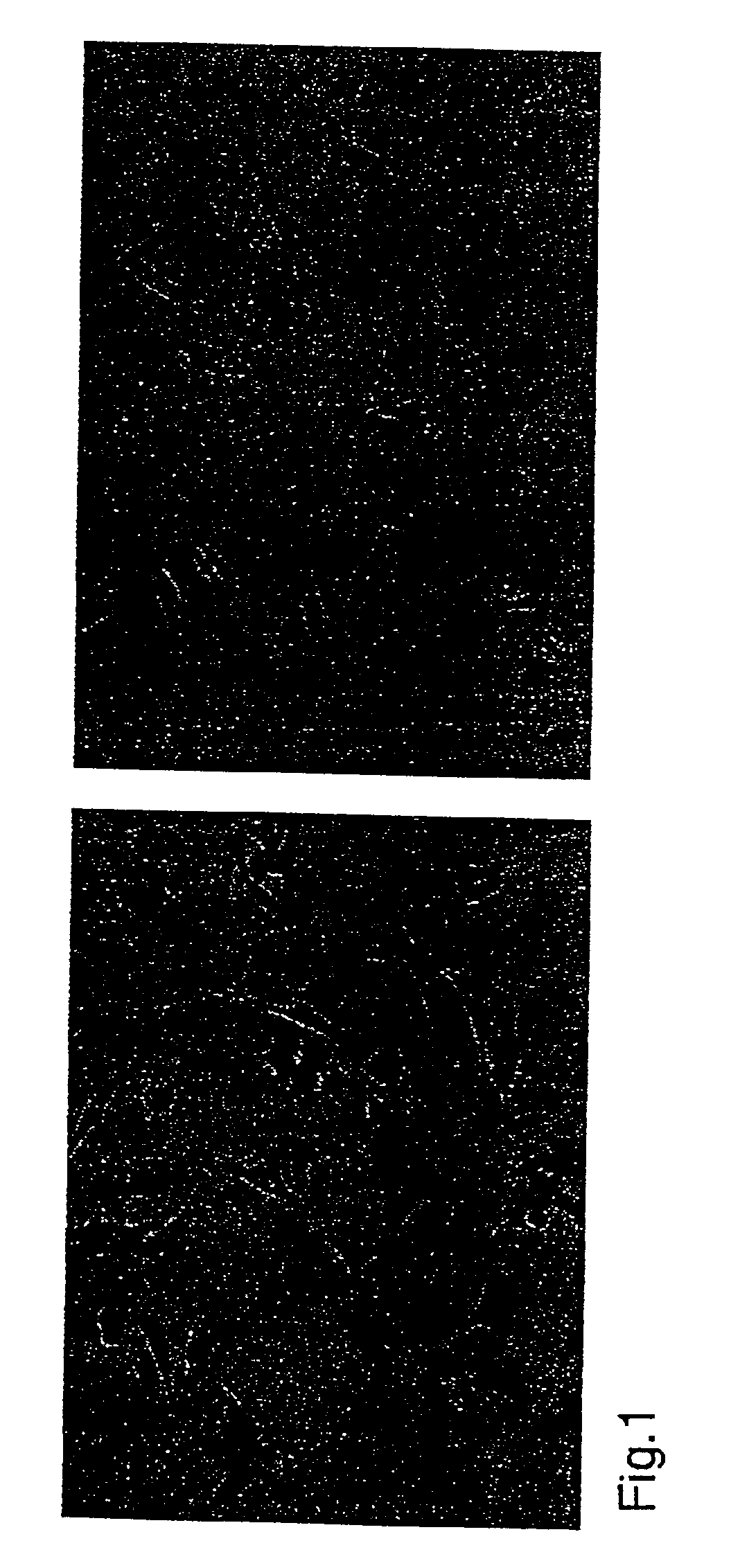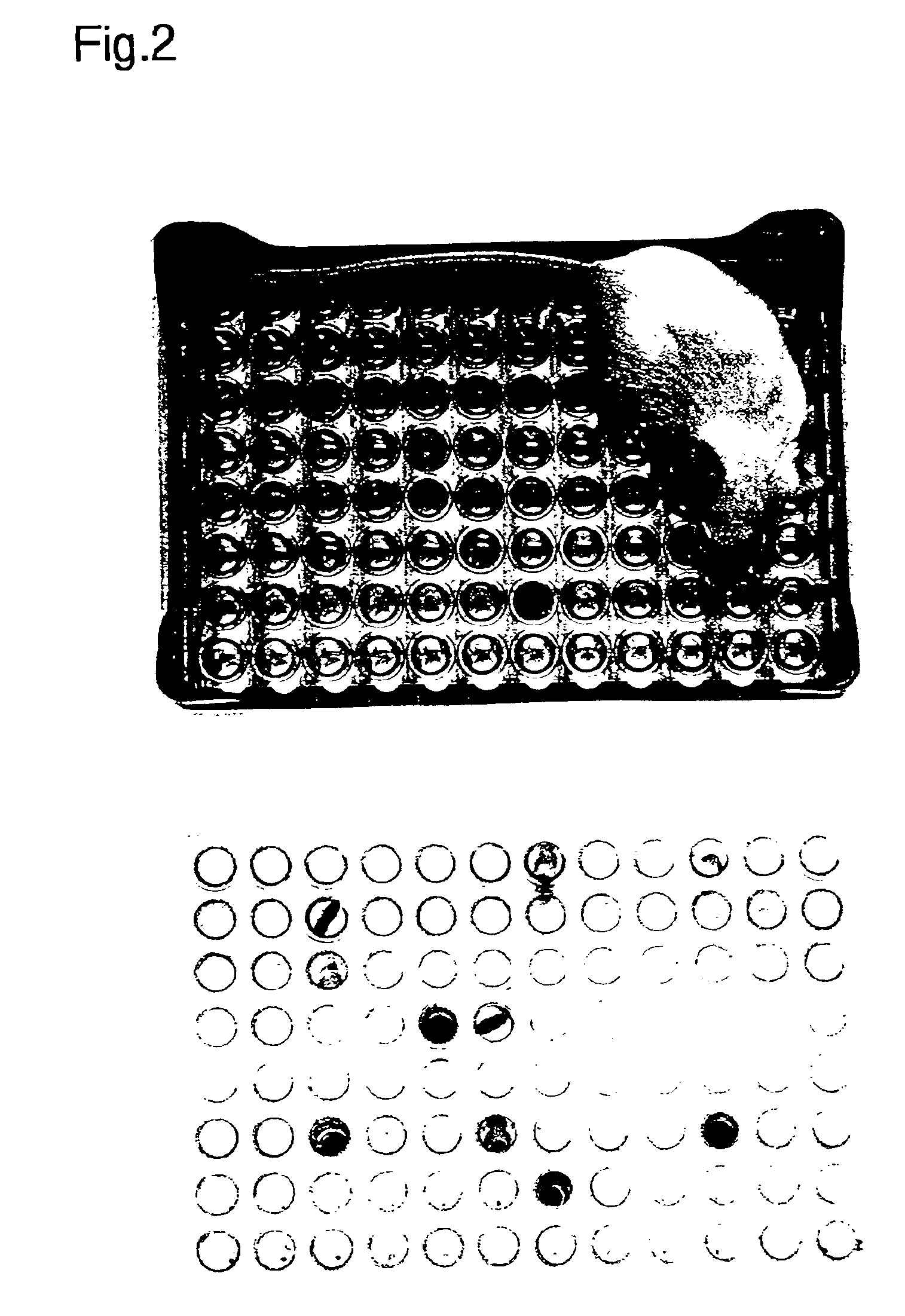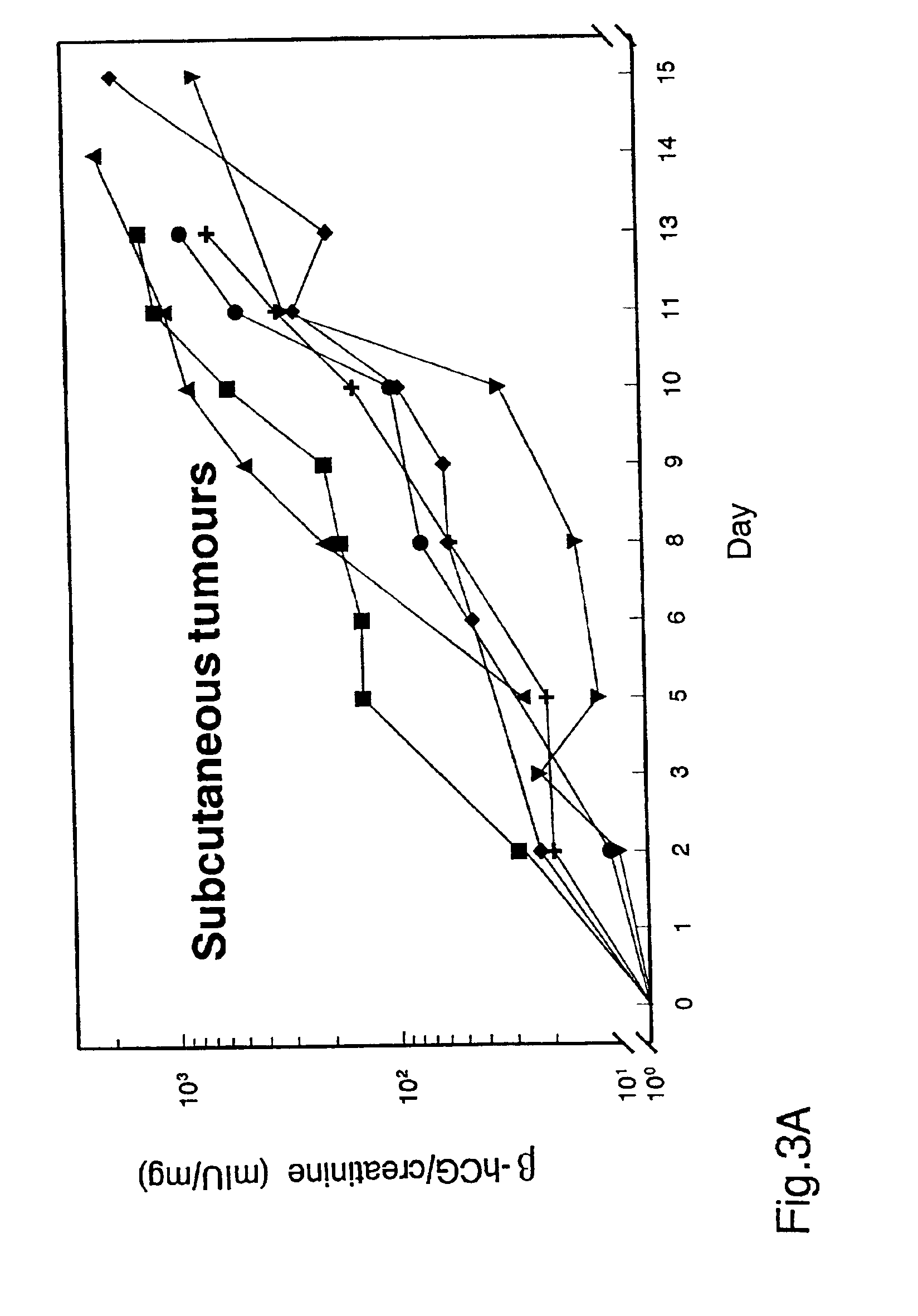Non-invasive approach for assessing tumors in living animals
- Summary
- Abstract
- Description
- Claims
- Application Information
AI Technical Summary
Benefits of technology
Problems solved by technology
Method used
Image
Examples
example 1
Materials and Methods
[0050]B 16-F10 (mouse melanoma cell line), EMT6 (mouse mammary carcinoma cell line), and SW480 (human colon carcinoma cell line) cells were obtained from the American Type Culture Collection. B16 and EMT6 cells were maintained in DMEM growth medium (Life Technologies, Gaithersburg, Md.), and SW480 cells were cultivated in McCoy's 5A medium (Life Technologies). Media was supplemented with 10% fetal bovine serum (HyClone, Logan, Utah), 100 U / ml of penicillin, and 100 μg / ml of streptomycin.
[0051]To generate a β-hCG expression vector, a hCG cDNA fragment (534 bp) was amplified via PCR from human placental cDNA (Clontech, Palo Alto, Calif.), using the primers 5′-TGTGCTCTAGATCATGACCAAGGATGGAGATGTTCCAG-3′ (SEQ ID NO:1) and 5′-GCACAGTCTAGATTATTGTGGGAGGATCGGG-3′ (SEQ ID NO: 2). The PCR product was sequenced to confirm that it was mutation-free and cloned through several steps into the pCIneo expression vector (Clontech, Palo Alto, Calif.), generating pCI-hCG. The tgCMV / H...
example 2
Generation of Recombinant Tumor Cells
[0052]Cells of three different cancer cell lines were transfected with the β-hCG expression vector as described below. A total of 2×106 cells were transfected with 9 μg of linearized plasmid DNA using the FuGene 6™ reagent (Boehringer Mannheim, Indianapolis, Ind.) according to the manufacturer's instructions. Approximately 70%, 60%, and 25% of tested clones derived from EMT-6, B16, and SW480 cells, respectively, stained uniformly and intensely with an antibody to β-hCG (FIG. 1).
[0053]Transfectants which constitutively expressed β-hCG were maintained in medium supplemented with 10% fetal bovine serum and 2 mg / ml geneticin. EMT6-CG-TK cells, which expressed herpes simplex virus thymidine kinase (TK) as well as β-hCG, were maintained in DMEM with 10% fetal bovine serum, 2 mg / ml geneticin, and 1.5 mg / ml Hygromycin B (Calbiochem, La Jolla, Calif.).
[0054]After ten days of selection in geneticin, clones of the recombinant tumor cells were evaluated for ...
example 3
Urine Collection and Measurement of Urinary β-hCG and Creatinine
[0056]Female mice, 10-12 weeks old, were obtained from Harlan (Indianapolis, Ind.). For tail vein injections, 105 B 16-CG cells in 0.1 ml PBS were injected into C57BL / 6 mice. For intraperitoneal administration, 2×106 EMT6-CG cells in 0.3 ml PBS were injected intraperitoneally into Balb / c mice. For intrasplenic injection, 106 B16-CG cells in 0.1 ml PBS were injected into the spleens of athymic (nu / nu) mice. For subcutaneous injection, 3×106 B16-CG cells or 8×106 SW480-CG cells in 0.1 ml PBS were injected into subcutaneous tissues adjacent to the lower spine of athymic (nu / nu) mice.
[0057]Standard laboratory plasticware was reconfigured to form a urine collection device. A “house” was made by placing a 96-well 0.2 ml PCR plate (Research Products International Corp., Mount Prospect, Ill.) on an inverted pipette tip rack inside the box (see FIG. 2). Mice were placed in the “house” and the wells were checked for urine deposit...
PUM
| Property | Measurement | Unit |
|---|---|---|
| Ratio | aaaaa | aaaaa |
| Therapeutic | aaaaa | aaaaa |
| Time | aaaaa | aaaaa |
Abstract
Description
Claims
Application Information
 Login to View More
Login to View More - R&D
- Intellectual Property
- Life Sciences
- Materials
- Tech Scout
- Unparalleled Data Quality
- Higher Quality Content
- 60% Fewer Hallucinations
Browse by: Latest US Patents, China's latest patents, Technical Efficacy Thesaurus, Application Domain, Technology Topic, Popular Technical Reports.
© 2025 PatSnap. All rights reserved.Legal|Privacy policy|Modern Slavery Act Transparency Statement|Sitemap|About US| Contact US: help@patsnap.com



